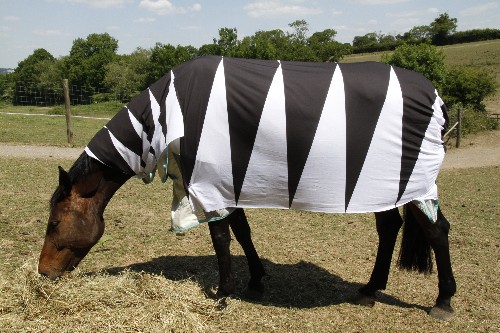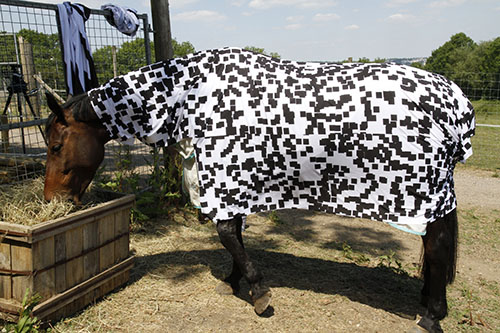Their findings, published today in the Journal of Experimental Biology, reveal that stark black-white distinctions and small dark patches are particularly effective in thwarting horsefly attack. These characteristics specifically eliminate the outline of large monochrome dark patches that are attractive to horseflies at close distances.
The team theorise that the thin back stripes serve to minimise the size of local features on a zebra that are appealing to the biting flies.
The research was led by Professor Tim Caro and Dr Martin How both from the University of Bristol’s School of Biological Sciences.
Prof Caro explained: “We knew that horseflies are averse to landing on striped objects - a number of studies have now shown this, but it is not clear which aspects of stripes they find aversive.
“Is it the thinness of the stripes? The contrast of black and white? The polarized signal that can be given off objects? So we set out to explore these issues using different patterned cloths draped over horses and filmed incoming horseflies.”
The team found that tabanid horseflies are attracted to large dark objects in their environment but less to dark broken patterns. All-grey coats were associated with by far the most landings, followed by coats with large black triangles placed in different positions, then small checkerboard patterns in no particular order. In another experiment, they found contrasting stripes attracted few flies whereas more homogeneous stripes were more attractive.
Professor Caro added: “This suggests that any hoofed animal that reduces its overall dark outline against the sky will benefit in terms of reduced ectoparasite attack.”
The team found little evidence for other issues that they tested, namely polarization or optical illusions confusing accurate landings such as the so-called ‘wagon-wheel effect’ or ‘the barber-pole effect’.
Now the team want to determine why natural selection has driven striping in equids - the horse family -but not other hoofed animals.
Professor Caro added: “We know that zebra pelage – fur - is short, enabling horsefly mouthparts to reach the skin and blood capillaries below, which may make them particularly susceptible to fly annoyance, but more important, perhaps, is that the diseases that they carry are fatal to the horse family but less so to ungulates. This needs investigation.”
Paper:
‘Why don’t horseflies land on zebras’ by Tim Caro, Martin How et al in Journal of Experimental Biology.


